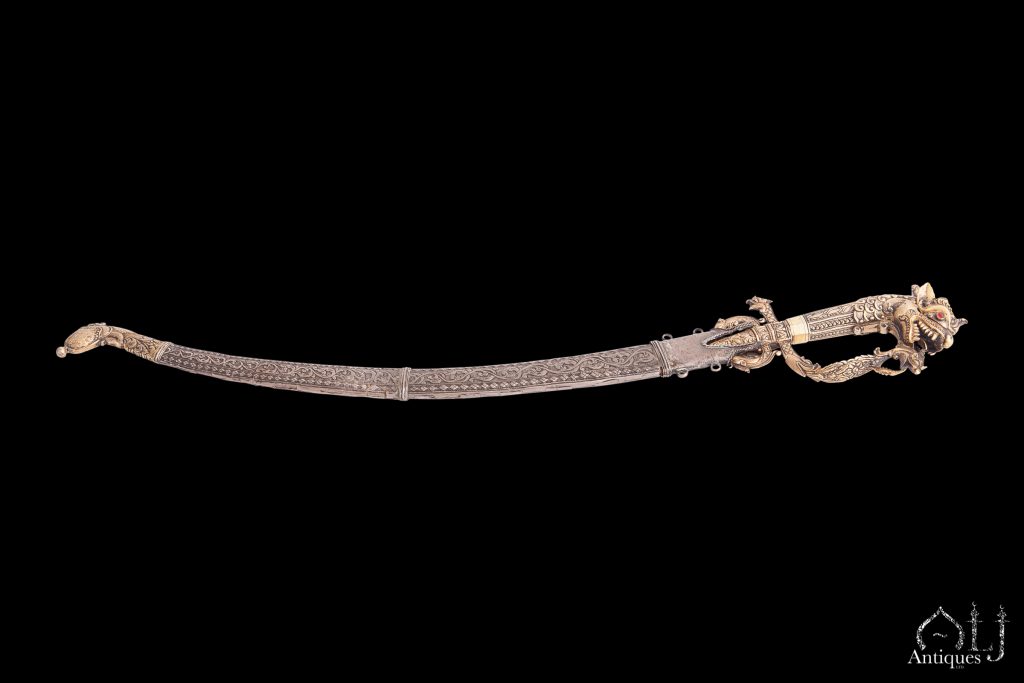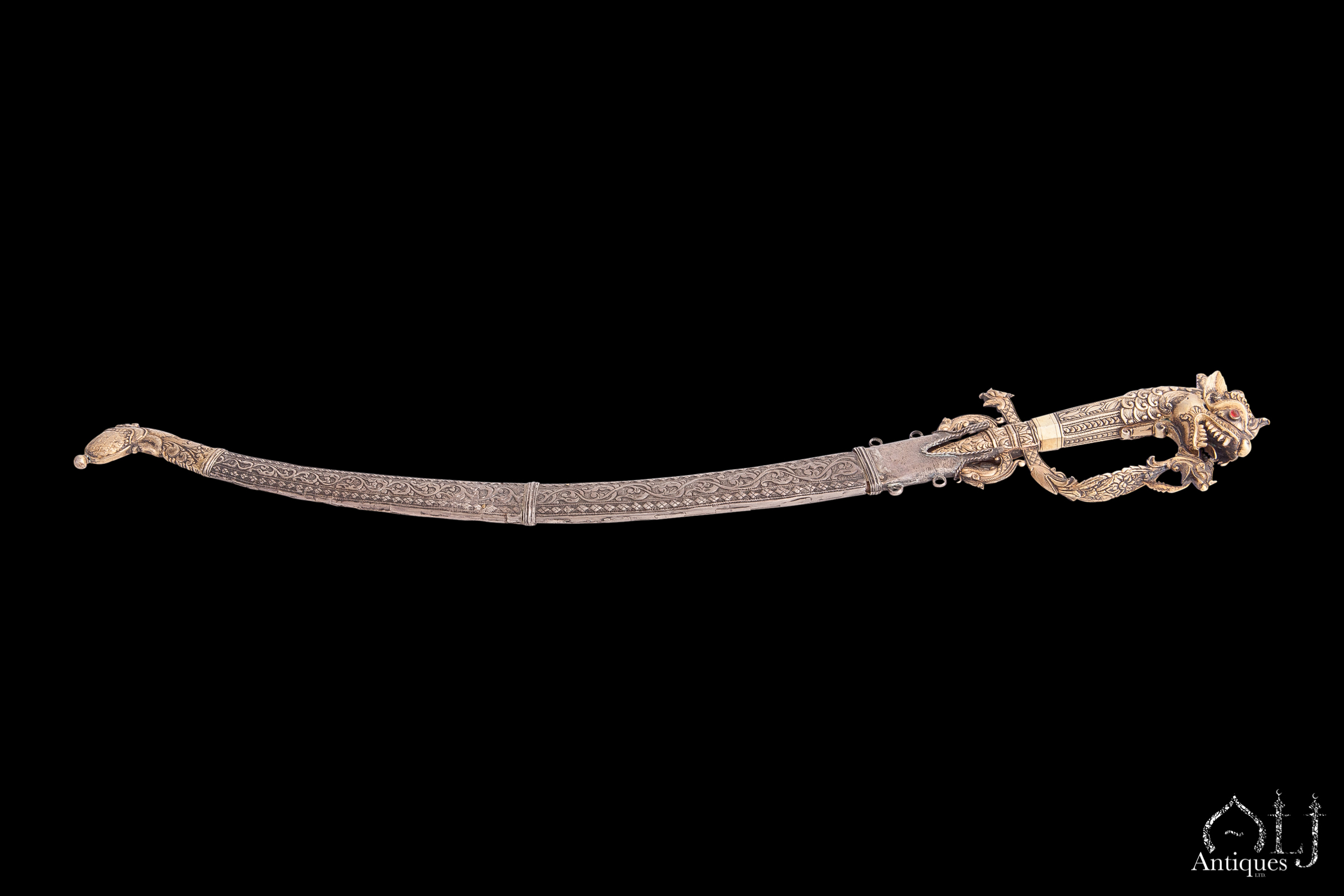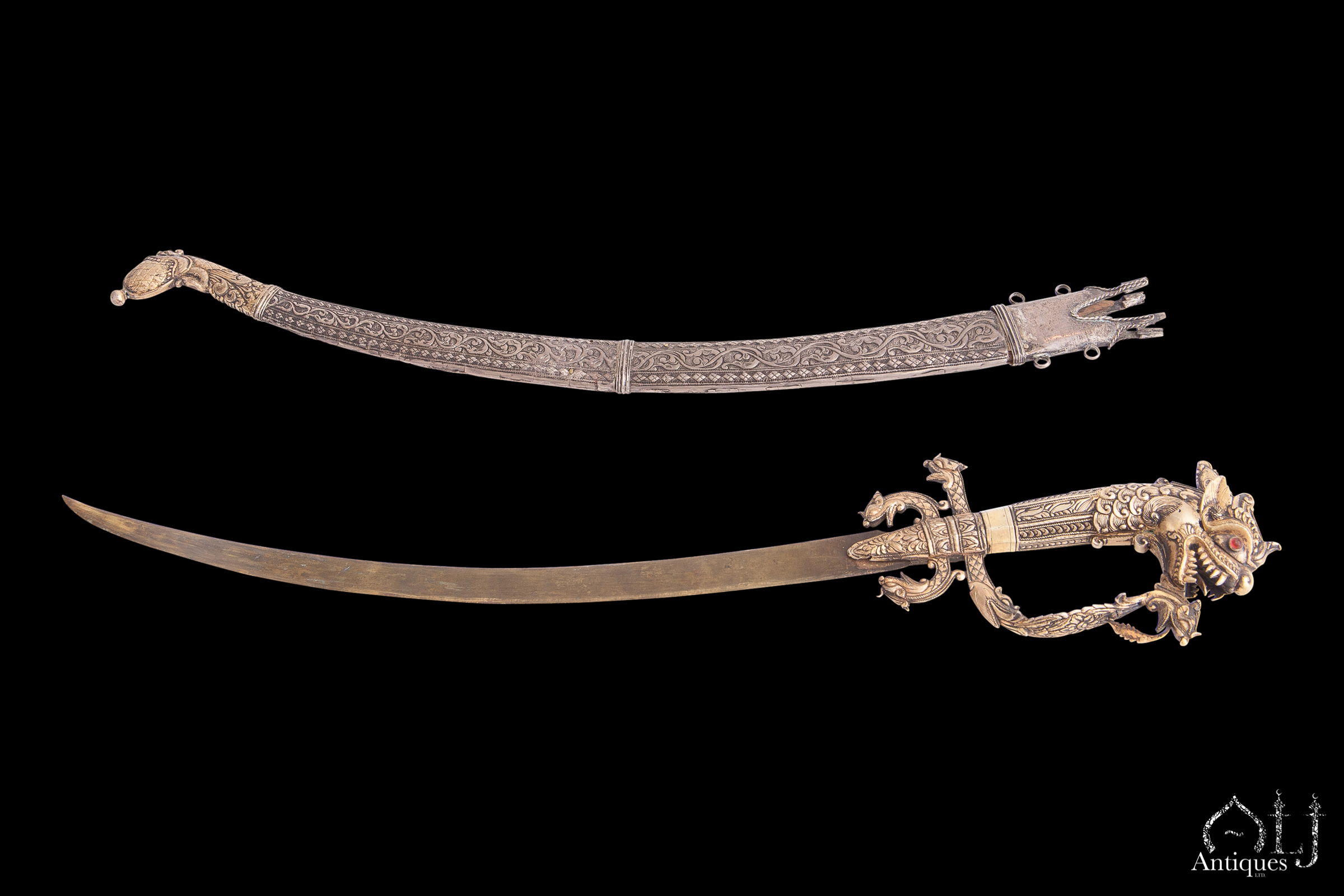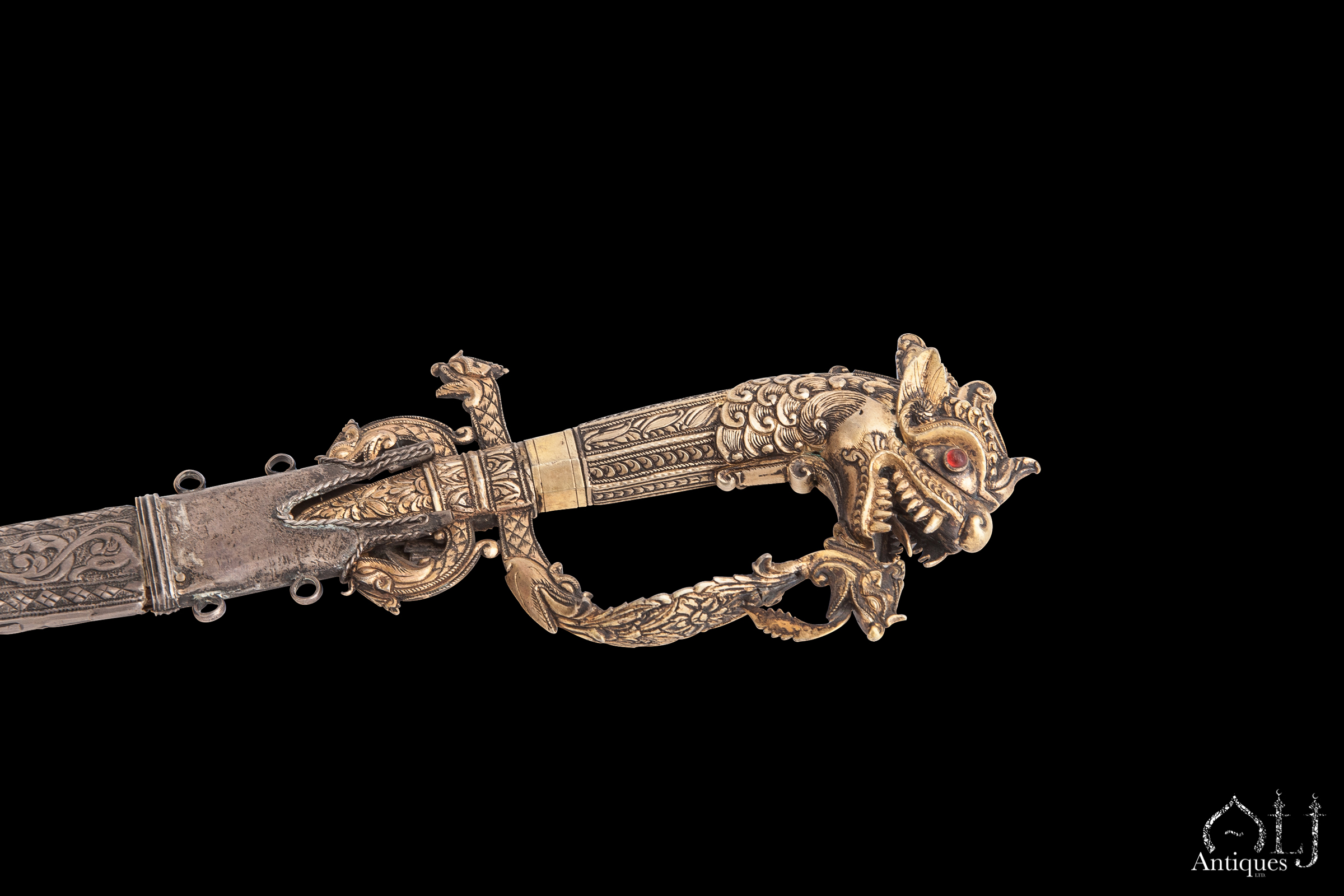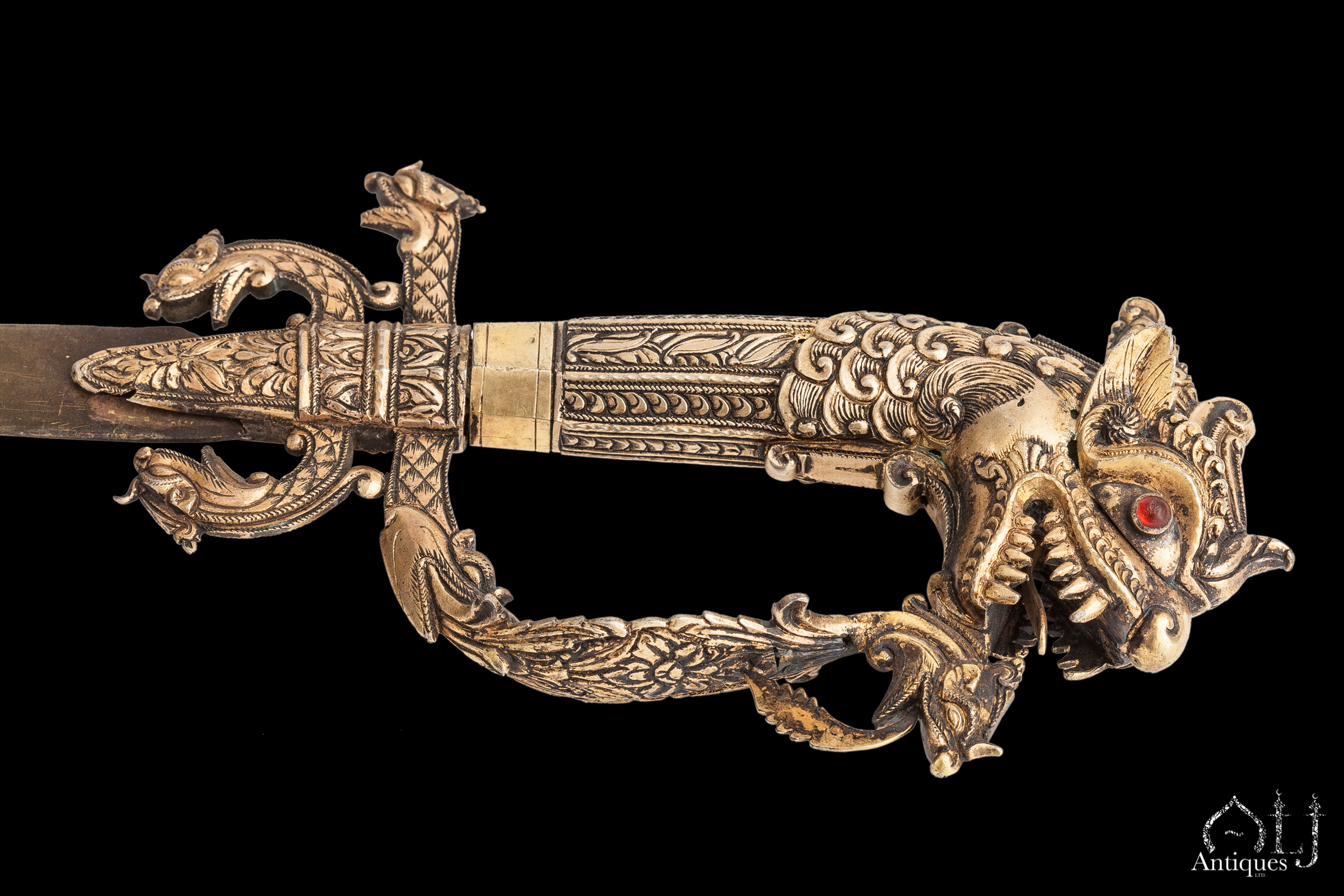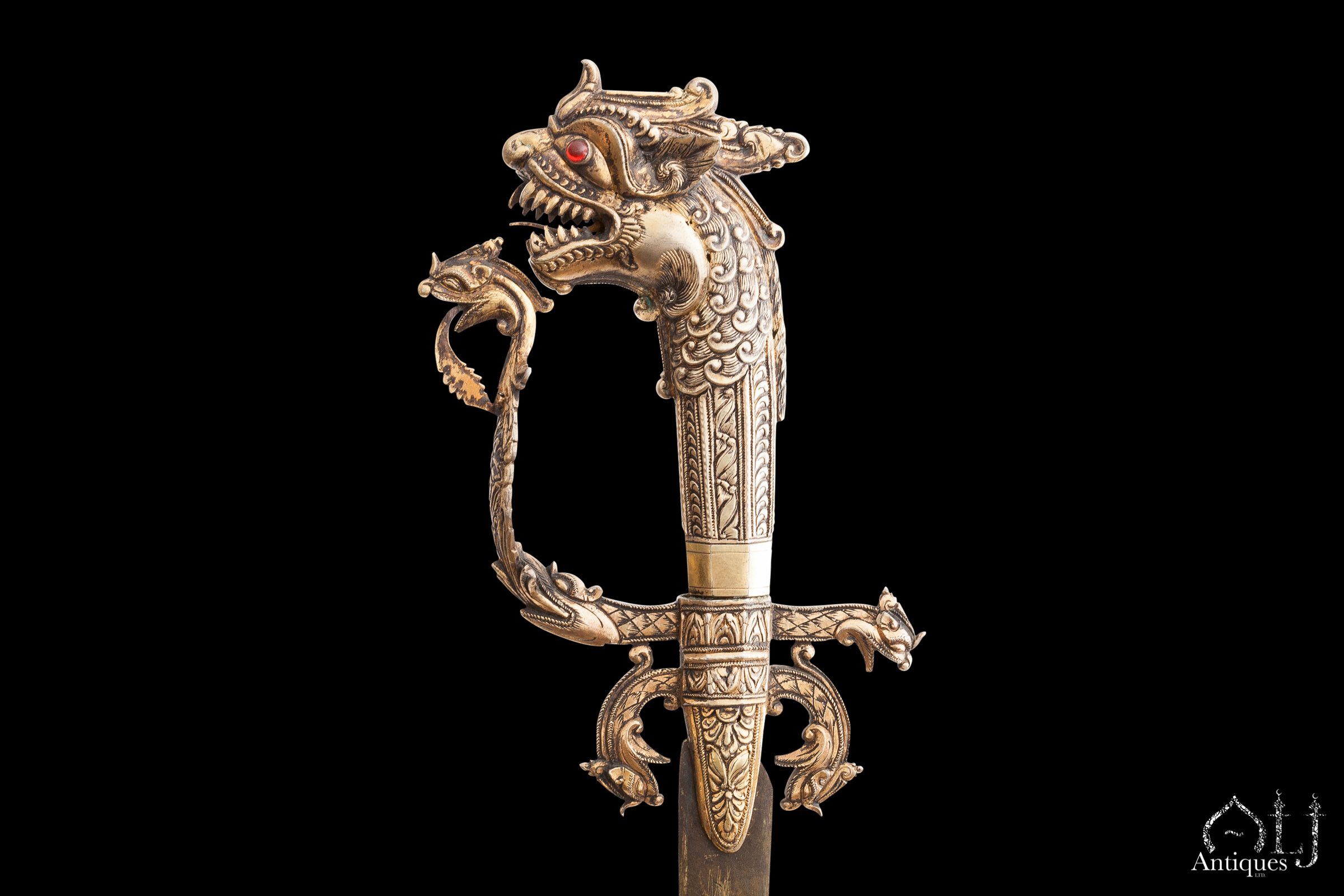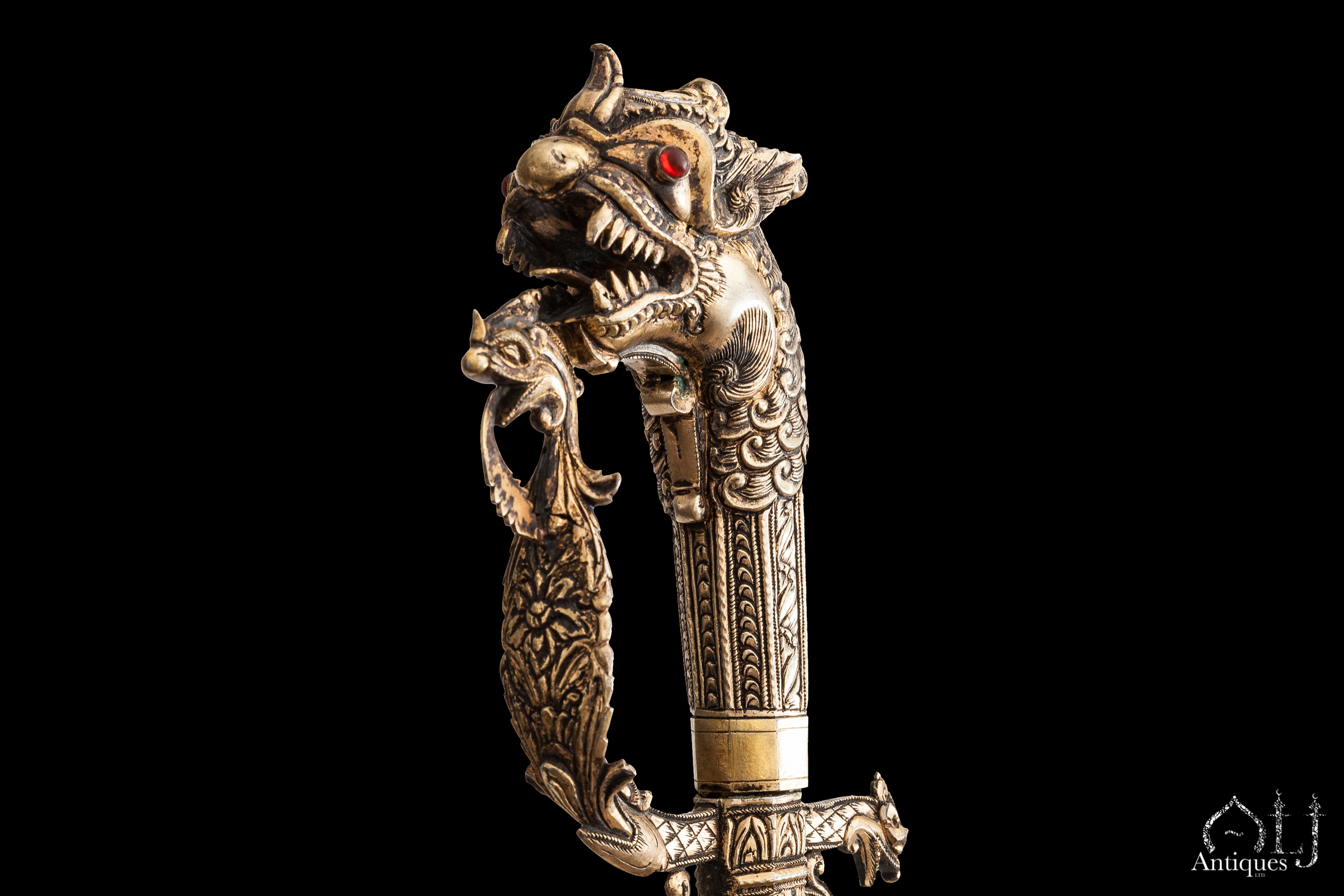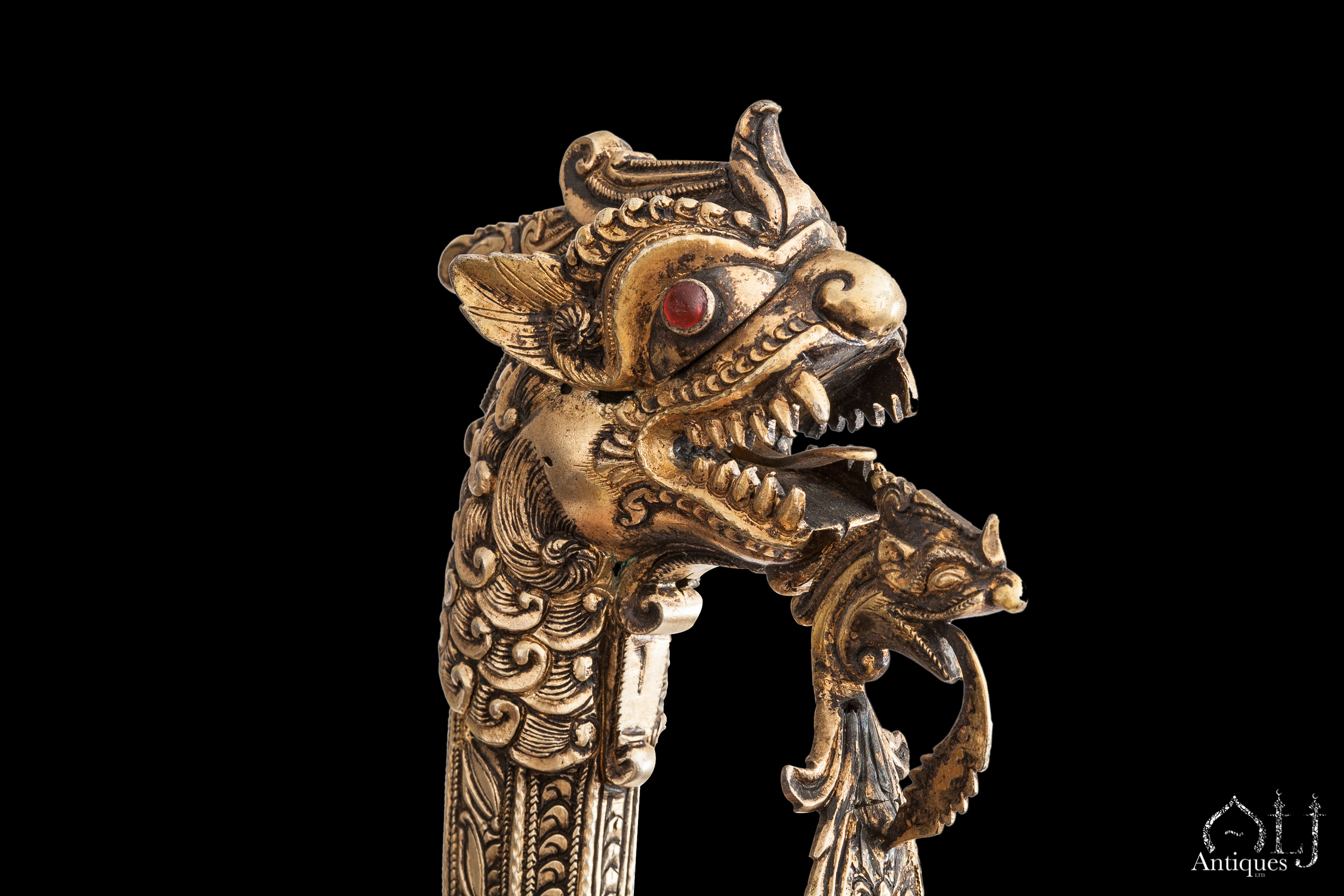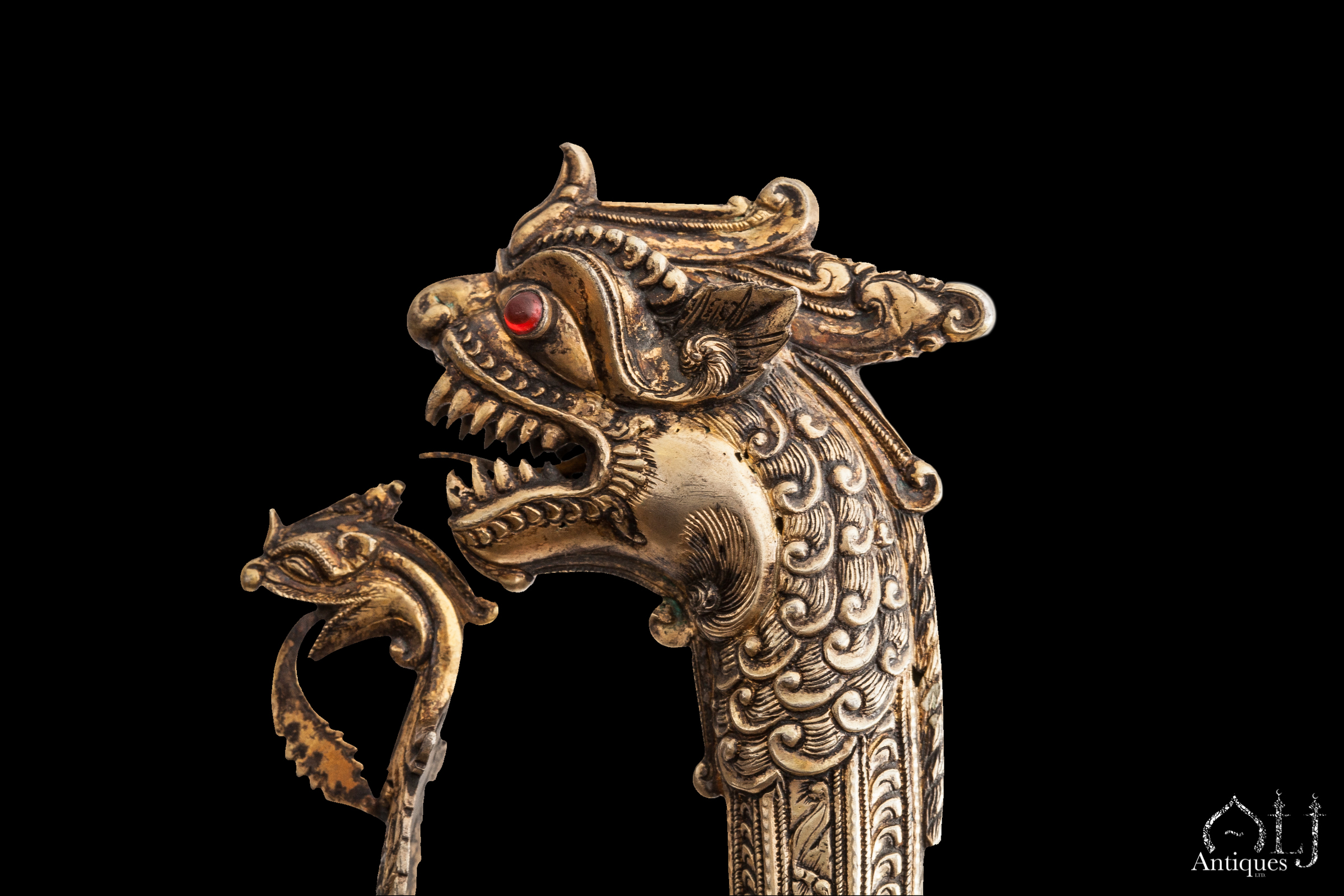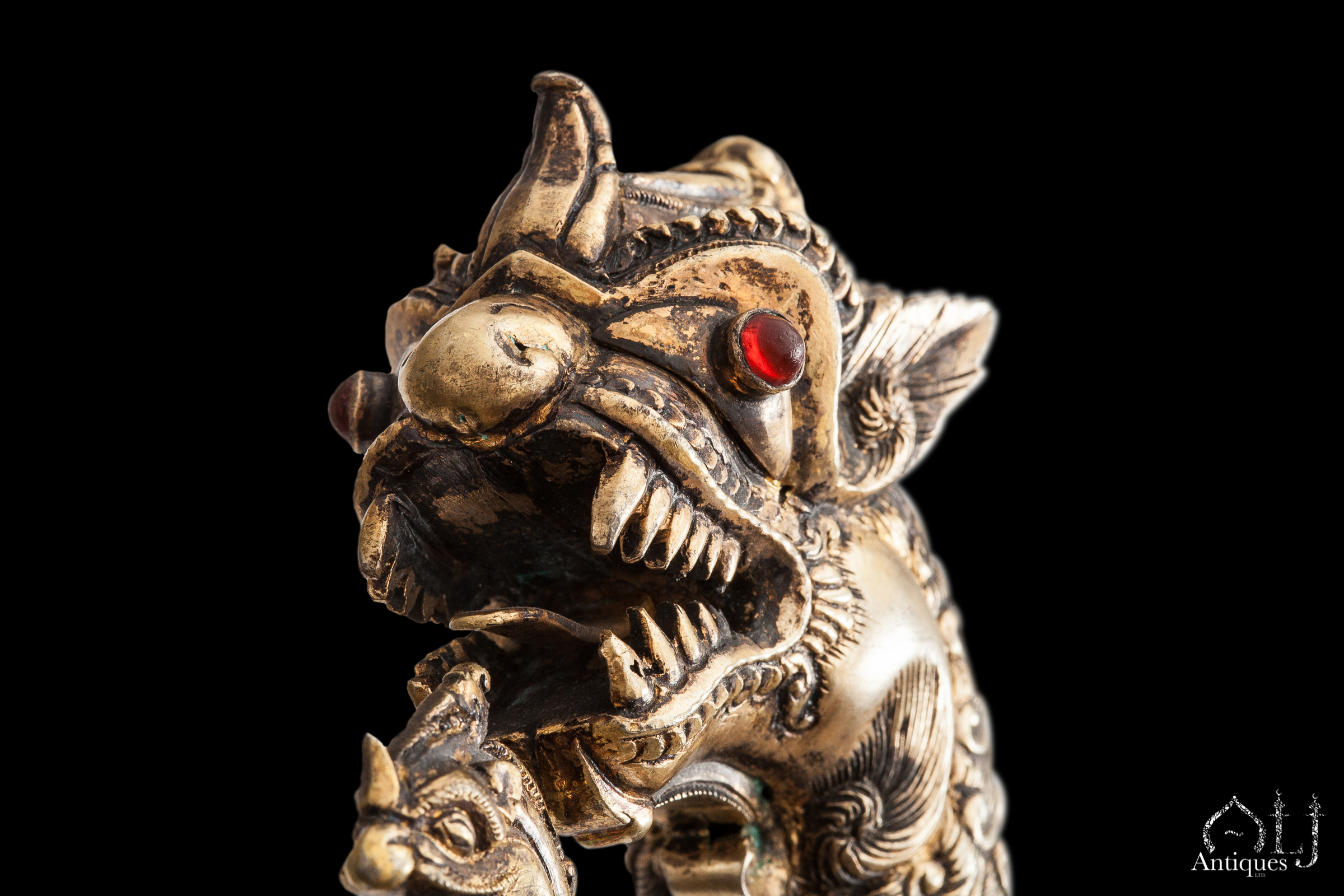Description
A Fine Parcel-Gilt Silver Sinhalese Short Sward (Kastane), Sri Lanka, Late 18th early 19th Century
Ceremonial weapons from Ceylon, now a day’s known as (Sir Lanka) are very highly and beautifully decorated, such as the Kastane, and the Pihiya-Kaetta (Please view our following lot No. 43 for more information).
At the beginning of the 17-century the Dutch republic was emerging as a very enterprising and dynamic force among the European Nations. The Dutch were distinguishing themselves as great seafarers venturing into unknown oceans and territories.
The VOC is the abbreviation in Dutch of (Vereenigde Oostindische Compagnie), or the Dutch East-India Company that was established in 1602.
A few decades later it controlled huge territories in South Africa, Ceylon and the Dutch East Indies (now day’s known as Indonesia).
Settlements were established in India, Malaysia, Japan and China.
Between the periods of (1658-1796), Pahata-ratta (the low land of Ceylon) was VOC territory.
As a reward for expelling the Portuguese from Ceylon, the King of Kandy granted the VOC a monopoly in the Cinnamon trade. The VOC did very well out of this reward and also the Kings of Kandy and their increasing wealth was reflected in the production of various works of art, such as the production of magnificent Furniture, Ivory and Tortoiseshell Caskets and objects made out of Gold and Silver, Jewelry and Weapons such as (Kastane and Pihiya-Kaetta).
The word Kastane derives from the Portuguese term for a large knife, Cantana, however, the Portuguese word itself is derived from the Japanese word Katana translating to (sword).
The shape of the Kastane’s hilt suggests that it might had been derived originally from the Turkish Sabre, or it could be also inspired by the Japanese sword.
The distinctive Sinhalese Lion’s head shape of the hilt has to do with the King Raja-Simha, after his victory in the battle against the Portuguese in 1562, he was called the Lion King.
During the relatively peaceful period of the Dutch control, the Kastane has evolved into a richly decorated ceremonial weapon with a hilt, so elaborate that the castanet was virtually unusable in combat.
Kastanes were made out of different materials, such as gold, silver, brass, copper, buffalo horn and wood.
Only the King could carry weapons that are made of solid gold with gemstones inset.
Worth maintaining that our current lot had been done as a very fine ceremonial example, with an original brass blade, the eyes of the Lion’s head on the handle is inset with a red stone.
The quillons and knuckle-bow incorporate Simha and Makara heads.
References:-
For similar examples please see lot nos. 243-244, illustrated in Asian Art and Dutch Taste, by Jan Veenendaal.
For other examples also see Hales, Robert published 2013, Islamic & Oriental Arms & Armour, pages 180-181
For other examples also see Indian Arms And Armour, by Natasha Bennett and Thom Richardso, published 2015, Royal Armouries, please see Book front cover also pages 176-178.
Condition:- very good condition
Dimensions:-
56 cm. long
46.5 cm long (Silver Handle & Brass Blade)
43 cm long (Silver Scabbard)

